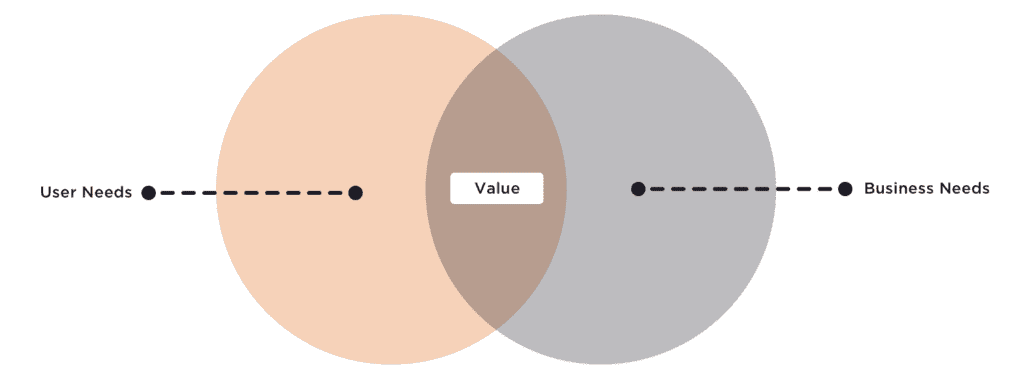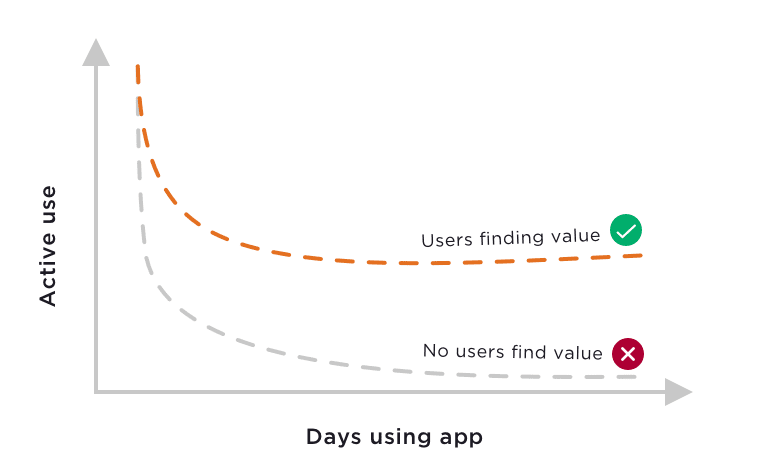Everyone wants their digital product to be a success. Everyone wants their app to deliver the right results. But the reality is that the average app loses 77% of its users after three days. Within 30 days, 90% of users are gone. And within three months, just 5% remain. At Sonin, we use product strategy and UX design to reduce the risk of app abandonment, increase the retention rate of your product, and make sure you get your desired business results.
You can safeguard your digital product against app abandonment through strong UX design and a keen focus on user retention. This approach is much more cost effective than constantly trying to acquire users you can’t keep because of bad design, the wrong feature set, or a fundamental lack of alignment with what your users want. But to achieve this, you have to understand how users are interacting with your app, why, what they love, and what’s getting in their way.
The Challenge
We’ve all heard about how mobile users have sky-high expectations. But in truth, their needs are simple. They want to solve the problems they’re facing in as few steps as possible. That’s it.
Your challenge then is to find the balance between what your users want to accomplish and what your business wants to achieve. Getting that balance wrong is how you can end up with a product that schedules hundreds of push notifications trying to claw users back into an app they only ever opened once. It’s also how you can end up with a platform supporting a large user base but that continues to loses money because it lacks the right product pricing strategy.
To find that balance, you must be thorough about carrying out product discovery to create a clear vision for your product. You need to be clear about who your product is for and how it helps them.

Improving Your Activation Period
Activation is what we use to describe the moment a user experiences the value your product has to offer. It’s a pivotal part of your user experience and has a crucial impact on the acquisition of new customers.
Your activation rate measures the number of users who progress through your onboarding and setup flow to complete their first key milestone and see the value of your product for themselves. The average benchmark for SaaS is 36%, so that’s only one of every three users getting to that point.
To beat this average, you have to showcase your product’s value proposition at every step in the journey – long before they begin onboarding. From your marketing through to your website and store page.
Want to fix your app abandonment rate?
User Onboarding 101
Onboarding is an essential part of every successful product. A poor onboarding experience has been proven to cause between 40% and 60% of your users to drop off after signing up.
To avoid this, the sign up flow should be as simple as possible while still allowing you to capture key information about your users. By understanding what your users want to achieve through your app, you can group them into segments and tailor their experience once they’re in the app to help them achieve their specific goals.
When you make it easy for users to tell you what they want to do, you can drive them to the point of value much, much faster and convert more customers.
Flattening the Retention Curve
Avoiding app abandonment is about more than just your onboarding and user activation. You have to consider long beyond the initial activation period and focus on flattening your retention curve.

This curve is a model that combines the time (usually in days, weeks, or months) with the percentage of people still using and getting value from your app.
All products see some level of drop-off. But the sooner and higher your curve flattens, the better – since it shows that a certain number of users are still getting that value and you have achieved product market fit.
Rather than looking at your retention curve across your entire product, create a distinct curve for each of the segments you identify during onboarding. You can then examine these distinct cohorts individually to make improvements to their user journeys, promote highly useful features in context, and create a flatter, higher retention curve for each user group.
Creating Virality
Everyone wants their product to grow at a rapid pace. But launching a new digital product isn’t easy. If you’re entering into a crowded marketplace, it can be hard to stand out. If you’re trying to create a new category, it can feel like you’re launching into the ether.
To create viral growth that fuels itself through a network effect is easier when you start small. A tightly knit network of early adopters can act as advocates within their work and social groups. A product-led approach to growing your app can help you scale in a sustainable and cost-effective way as you achieve product market fit.
Final Thoughts
If you want your product to be a success, then you have to get to the heart of the problem you’re trying to solve. You should understand it better than anyone else – your users and competitors alike – and demonstrate this understanding at every step in the user journey.
Once they’re in your app, as a saas software development company, you should be segmenting your users, tailoring their experiences to support their goals, and measuring how successful each segment is. Starting small and building momentum with the right mobile app development services will help you find product market fit fast, reduce your app abandonment, drive retention, and allow you to grow sustainably.
Read next: Product Validation: How to Prove Product Ideas Fast